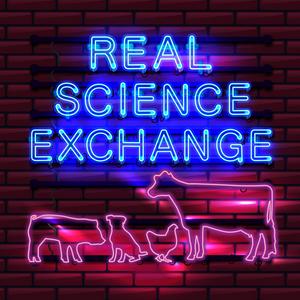Pet Food Ingredient Trends: Insights from 2024 Sales with Lara Moody, Institute for Feed Education and Research; Louise Calderwood, American Feed Industry Association; Dr. Charles Starkey, North American Renderers Association
This episode was recorded at the 2025 Petfood Forum in Kansas City, Missouri.In 2020, the Institute for Feed Education and Research (IFEEDER), American Feed Industry Association (AFIA), North American Renderers Association (NARA) and Pet Food Institute (PFI) collaborated to publish the Pet Food Consumption Report. The organizations collaborated again to publish a second edition in 2025, which Lara presented at Petfood Forum. Data sets from both brick-and-mortar sales and Amazon sales were used to create the report. (6:16)Lara explains that data analysts reverse-engineered product labels from dog and cat food and treats in the dataset to identify trends, including ingredient use, value, tonnage, upstream value, and what pet food adds to the economy. Dry dog food makes up the largest volume of sales at 55%, and also takes the number one spot in value of sales at 38%. Dry cat food is the second largest by volume (16%), followed by dog treats (11%). However, dog treats are the second largest by value (20%), followed by dry cat food (12%). (7:57)Louise and Charles talk about trends in non-veterinary spending on pets, cultural shifts in consumer perceptions of pet ownership, pet food trends in developing countries, and consumer understanding of human and pet nutrition needs. (12:04)Lara notes that the top five ingredients in the report are chicken and chicken products, whole grains, milled grains, beef and beef products, and marine-based ingredients. Chicken and chicken products made up 2.2 million tons, while marine-based products represented about 500,000 tons. Marine products doubled in volume from the 2020 report to the 2025 report, signifying a trend of higher value, more select ingredients coming into the pet food space. Salmon and cod are the primary marine ingredients. Lara remarks that the specialty ingredients side of the report is fascinating, with items like blueberries, tomatoes, peas, beet pulp, cranberries, and flaxseed making an appearance. Louise explains the 2020 report had less than 400 ingredients, while more than 600 ingredients appear in the 2025 report. Charles notes that since the last report, there has been a slight shift to more fresh meat products and slightly less rendered products. (16:10)About half the cat and dog food is made up of upcycled ingredients. The panel discusses consumer perceptions of byproducts and co-products, the sustainability role that these products play in the industry, and their organizations’ commitments to education and policy efforts. (22:27)Pet food manufacturers purchase 9.8 million tons of ingredients valued at about $13.2 billion, which then represents about $52 billion in sales. Lara talks about some of the upstream impacts of the pet food industry. Pet food is manufactured in 43 states, with the top five being Missouri, Iowa, Kansas, Pennsylvania, and California. Each of these states is selling more than $700 million worth of ingredients to pet food manufacturing. Relatively few pet food ingredients are imported; amino acids, vitamins, minerals, and marine products would be the exception. Manufactured pet food has a fairly strong export market. (29:55)Lastly, panelists share their take-home thoughts. (35:56). The 2025 report is available at https://www.ifeeder.org/. You can download the full report as well as graphics, and there is a feature that allows you to create your graphs and charts with the data. Please subscribe and share with your industry friends to invite more people to join us at the Real Science Exchange virtual pub table. If you want one of our Real Science Exchange t-shirts, screenshot your rating, review, or subscription, and email a picture to
[email protected]. Include your size and mailing address, and we’ll mail you a shirt.
